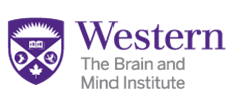Document Type
Article
Publication Date
4-1-2021
Journal
Early Intervention in Psychiatry
Volume
15
Issue
2
First Page
344
Last Page
351
URL with Digital Object Identifier
10.1111/eip.12948
Abstract
Aim: Thought disorder is a core feature of schizophrenia but assessment of disordered thinking is challenging, which may contribute to the paucity of mechanistic understanding of disorganization in early psychosis. We studied the use of linguistic connectives in relation to clinically quantified dimensions of thought disorder using automated speech analysis in untreated, first episode psychosis (FEPs) and healthy controls (HCs). Methods: 39 treatment-naïve, actively psychotic FEPs and 23 group matched HCs were recruited. Three one-minute speech samples were induced in response to photographs from the Thematic Apperception Test and speech was analysed using COH-METRIX software. Five connectives variables from the Coh-Metrix software were reduced using principle component analysis, resulting in two linguistic connectives factors. Thought disorder was assessed using the Thought Language Index (TLI) and the PANSS-8. Results: Connective factors predicted disorganization, but not impoverishment suggesting aberrant use of connectives is specific to positive thought disorder. An independent t test comparing low and high disorganization FEPs showed higher load of acausal temporal connectives in high disorganization FEPs compared to low disorganization FEPs (mean [SD] in high vs low disorganization FEPs = 0.64 (1.1) vs -0.37 (1.02); t = 2.91, P =.006). Acausal-temporal connectives were not correlated with severity of symptoms or cognition suggesting connective use is a specific index of disorganized thinking rather than overall illness status. Conclusions: Clinical assessment of disorganization in psychosis is likely linked to the aberrant use of connectives resulting in an intuitive sense of incoherence. In early psychosis, thought disorder may be reliably quantifiable using automated syntax analysis.



